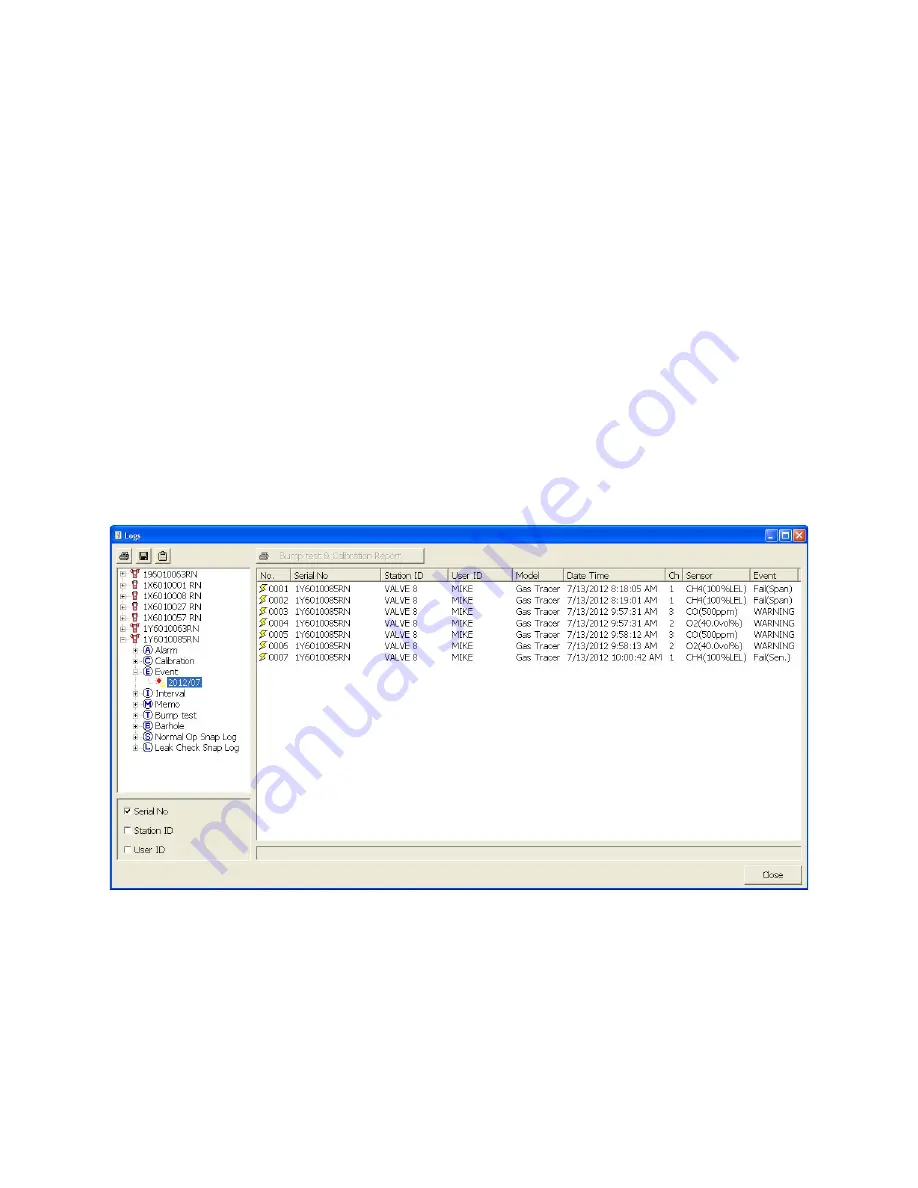
129 • Logs Button
Alarm event files save the time, instrument channel, gas, and alarm type of every gas
alarm event that occurs on a particular instrument. Warning (low alarm), Alarm (high
alarm), STEL, TWA, and overscale events are saved.
Trouble event files note the time, instrument channel, whether the event is an
instrument system failure or sensor failure, and the specific type of failure. Calibration
failures, dead battery alarms, and sensor failures are among the trouble events that
are saved.
Even though two types of files are saved, the PC Controller Program does not
distinguish between the two and shows them together and with the same lightning
bolt symbol. To view and perform desired operations with the event files:
1.
While in the Logs window, find your instrument by serial number, then click the
expanded view symbol (+) of or double-click the serial number folder to view
the contents.
2.
Click the expanded view symbol (+) of or double-click the Event folder to view
the contents. Event data folders are arranged by year/month.
3.
Click the year/month folder you wish to view. All event data files for that
instrument in that particular year/month will appear in the upper right frame.
The file number, serial number, station ID, user ID, model, date/time, channel
number, sensor, and event type appear in the same line.
Figure 101: Viewing Event Data
4.
To print event data from a date folder, be sure the desired date folder is
selected and click the Print control button in the upper left corner of the Logs
window. A dialog box will appear confirming if you want to print. Click OK.
5.
To save event data from a date folder, be sure the desired date folder is
selected and click the Save control button in the upper left corner of the Logs






























